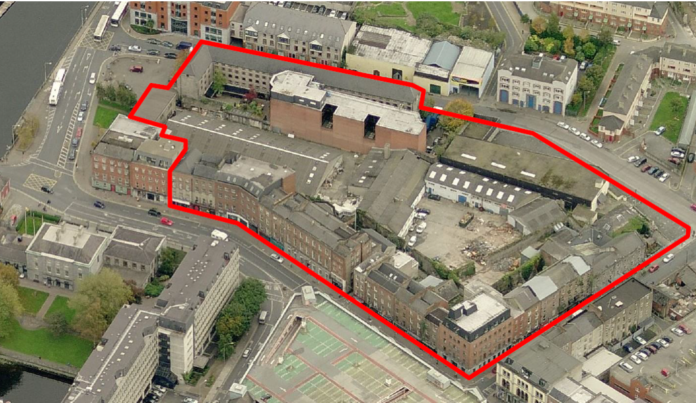
LIMERICK City and County Council is preparing to move its staff out of The Granary building on Michael Street, ahead of construction work starting at the Opera Site.
A Council spokesman told the Limerick Post this week that it considers it “extremely prudent” for the local authority to do so as it will involve the redeployment of around 150 staff from the library, finance and Housing Assistance Payment (HAP) units.
“It is envisaged that staff will be moved to buildings within the city centre. One of the buildings being assessed is the Instore building on Ellen Street. This plan is predicated on a positive decision from An Bord Pleanála regarding the Oral Hearing into the Opera Site development,” he explained.
In the meantime, the Council is preparing to move staff out of the Granary building.
The €180 million Opera Centre will mainly comprise of business and commercial units. It will also include 45,000 square metres of active space including offices, shops, cafes and restaurants as well as an aparthotel, a new library, 16 apartments, car and bike parking space.
The 3.7-acre Opera Site project has been long heralded a landmark commercial development in a regional and national context and one that will reflect Limerick’s status as a leading destination for inward investment.
The project will be one of the largest urban developments undertaken outside of Dublin, with up to 3,000 workers expected to be employed at the site during the six-year development programme.
Limerick Twenty Thirty believes the project will put Limerick back on the map as a key driver for increased economic activity in the city centre and act as a catalyst for major city centre investment.
However, An Taisce had concerns over a threatened species of bat nesting on site. The heritage group objected that the proposed development will result in permanent loss of the bat roost for the common pipistrelle bat, the soprano pipistrelle, the Leisler’s bat and the lesser horseshoe bat on the Rutland Street site.
In its submission to An Bord Pleanála, An Taisce said that a range of habitats and protected species will be negatively impacted by the development.
The submission made by the organisation’s Limerick chairwoman Michelle Hayes also warned that the development will have a “major, negative and oppressive visual impact”.






